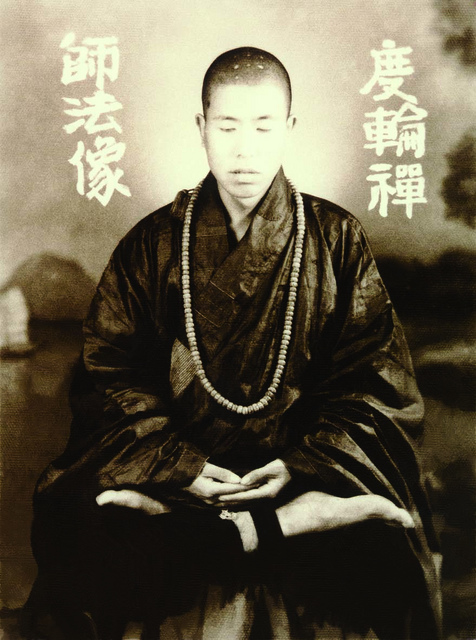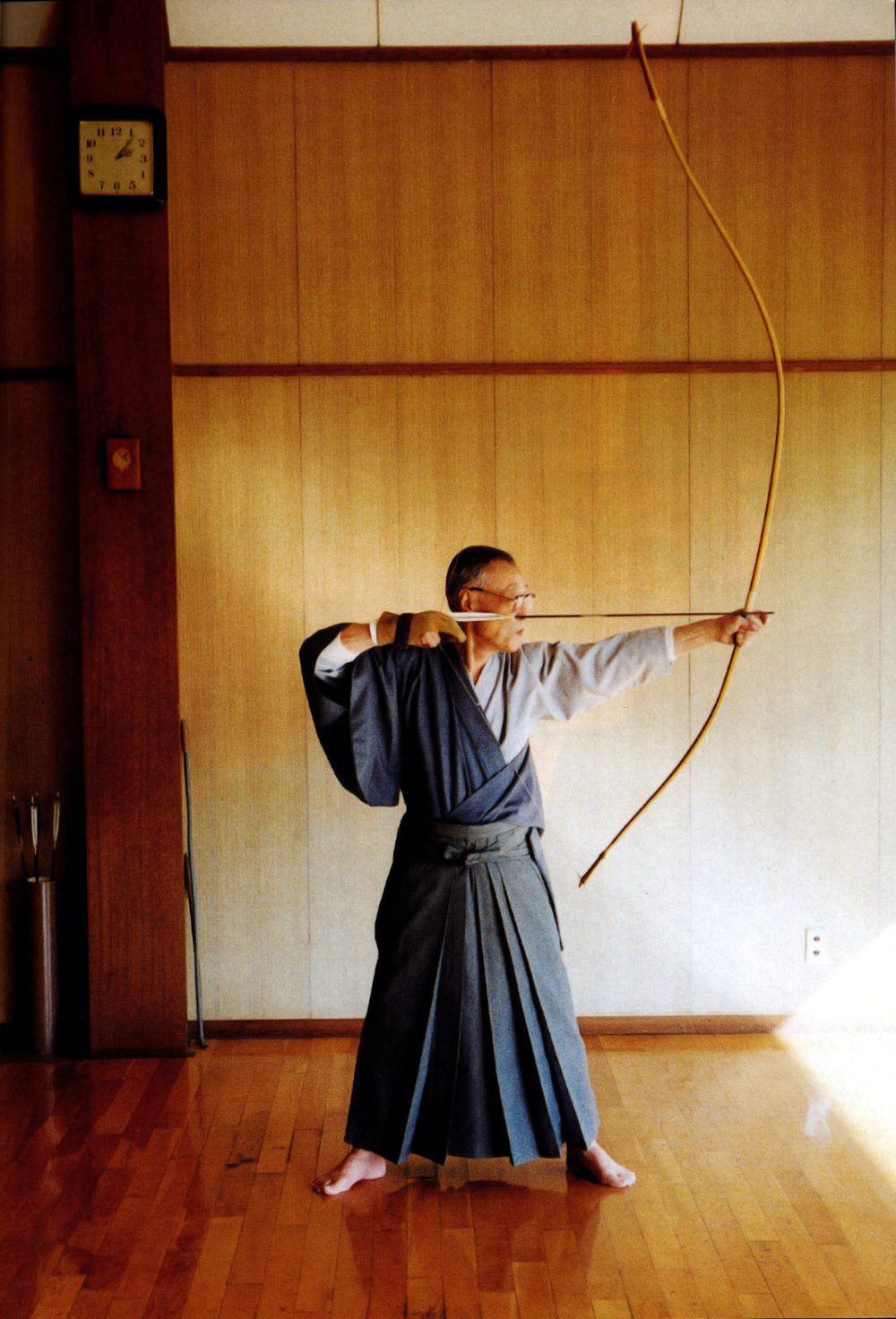|
Zen Mountain Monastery
Zen Mountain Monastery (or, Doshinji, meaning Temple of the Way of Reality) is a Zen Buddhist monastery and training center on a forested property in the Catskill Mountains in Mount Tremper, New York. It was founded in 1980 by John Daido Loori originally as the Zen Arts Center. It combines the Rinzai and Sōtō Zen traditions, in both of which Loori received Dharma transmission. Loori's first dharma heir was Bonnie Myotai Treace, Sensei, who received shiho, or dharma transmission, from him in 1996. From Loori's death in October 2009 until January 2015, Zen Mountain Monastery had two teachers: Geoffrey Shugen Arnold and Konrad Ryushin Marchaj, who received Dharma transmission from Loori in 1997 and 2009, respectively. Since January 2015, the training at the Monastery has been led by Shugen Roshi, assisted by Ron Hogen Green, Sensei; Jody Hojin Kimmel, Sensei; and Vanessa Zuisei Goddard, Sensei (currently on leave). Retreat center building The monastery was originally built as C ... [...More Info...] [...Related Items...] OR: [Wikipedia] [Google] [Baidu] |
New York (state)
New York, officially the State of New York, is a state in the Northeastern United States. It is often called New York State to distinguish it from its largest city, New York City. With a total area of , New York is the 27th-largest U.S. state by area. With 20.2 million people, it is the fourth-most-populous state in the United States as of 2021, with approximately 44% living in New York City, including 25% of the state's population within Brooklyn and Queens, and another 15% on the remainder of Long Island, the most populous island in the United States. The state is bordered by New Jersey and Pennsylvania to the south, and Connecticut, Massachusetts, and Vermont to the east; it has a maritime border with Rhode Island, east of Long Island, as well as an international border with the Canadian provinces of Quebec to the north and Ontario to the northwest. New York City (NYC) is the most populous city in the United States, and around two-thirds of the state's popul ... [...More Info...] [...Related Items...] OR: [Wikipedia] [Google] [Baidu] |
National Register Of Historic Places
The National Register of Historic Places (NRHP) is the United States federal government's official list of districts, sites, buildings, structures and objects deemed worthy of preservation for their historical significance or "great artistic value". A property listed in the National Register, or located within a National Register Historic District, may qualify for tax incentives derived from the total value of expenses incurred in preserving the property. The passage of the National Historic Preservation Act (NHPA) in 1966 established the National Register and the process for adding properties to it. Of the more than one and a half million properties on the National Register, 95,000 are listed individually. The remainder are contributing resources within historic districts. For most of its history, the National Register has been administered by the National Park Service (NPS), an agency within the U.S. Department of the Interior. Its goals are to help property owners and inte ... [...More Info...] [...Related Items...] OR: [Wikipedia] [Google] [Baidu] |
National Register Of Historic Places In Ulster County, New York
List of the National Register of Historic Places listings in Ulster County, New York This is intended to be a complete list of properties and districts listed on the National Register of Historic Places in Ulster County, New York. The locations of National Register properties and districts (at least for all showing latitude and longitude coordinates below) may be seen in a map by clicking on "Map of all coordinates". Eight of the properties and districts are further designated as U.S. National Historic Landmarks. __NOTOC__ Listings county-wide Former listing See also *National Register of Historic Places listings in New York References External links Kingston, New YorkNational Register of Historic Places travel itinerary {{National Register of Historic Places in Ne ... [...More Info...] [...Related Items...] OR: [Wikipedia] [Google] [Baidu] |
Zen Buddhist Monasteries
Zen ( zh, t=禪, p=Chán; ja, text= 禅, translit=zen; ko, text=선, translit=Seon; vi, text=Thiền) is a school of Mahayana Buddhism that originated in China during the Tang dynasty, known as the Chan School (''Chánzong'' 禪宗), and later developed into various sub-schools and branches. From China, Chán spread south to Vietnam and became Vietnamese Thiền, northeast to Korea to become Seon Buddhism, and east to Japan, becoming Japanese Zen. The term Zen is derived from the Japanese pronunciation of the Middle Chinese word 禪 (''chán''), an abbreviation of 禪那 (''chánnà''), which is a Chinese transliteration of the Sanskrit word ध्यान ''dhyāna'' ("meditation"). Zen emphasizes rigorous self-restraint, meditation-practice and the subsequent insight into nature of mind (見性, Ch. ''jiànxìng,'' Jp. '' kensho,'' "perceiving the true nature") and nature of things (without arrogance or egotism), and the personal expression of this insight in dail ... [...More Info...] [...Related Items...] OR: [Wikipedia] [Google] [Baidu] |
White Plum Asanga
White Plum Asanga, sometimes termed White Plum Sangha, is a Zen school in the Hakuyu Taizan Maezumi lineage, created by Hakuyu Taizan Maezumi. It consists of Maezumi's Dharma heirs and subsequent successors and students. A diverse organization spread across the United States and with a small presence in Europe, the White Plum Asanga Conceived of informally in 1979 by Maezumi and Tetsugen Bernard Glassman, the White Plum Asanga was named after Maezumi's father Baian Hakujun Dai-osho and then later incorporated in 1995 following Maezumi's death. Tetsugen Bernard Glassman was the White Plum Asanga's first President and his successor was Dennis Genpo Merzel. Following Merzel's term, in May 2007, Gerry Shishin Wick served as elected President of White Plum, until 2013 when Anne Seisen Saunders became the current president."Roshi Anne Seisen Saunders voted in as the new President of the White Plum Asanga". Zen Peacemaker Order. Retrieved 9 January 2016. Notable members *Jan Chozen ... [...More Info...] [...Related Items...] OR: [Wikipedia] [Google] [Baidu] |
Buddhist Temples In New York (state)
Buddhism ( , ), also known as Buddha Dharma and Dharmavinaya (), is an Indian religion or philosophical tradition based on teachings attributed to the Buddha. It originated in northern India as a -movement in the 5th century BCE, and gradually spread throughout much of Asia via the Silk Road. It is the world's fourth-largest religion, with over 520 million followers (Buddhists) who comprise seven percent of the global population. The Buddha taught the Middle Way, a path of spiritual development that avoids both extreme asceticism and hedonism. It aims at liberation from clinging and craving to things which are impermanent (), incapable of satisfying ('), and without a lasting essence (), ending the cycle of death and rebirth (). A summary of this path is expressed in the Noble Eightfold Path, a training of the mind with observance of Buddhist ethics and meditation. Other widely observed practices include: monasticism; "taking refuge" in the Buddha, the , and the ; and ... [...More Info...] [...Related Items...] OR: [Wikipedia] [Google] [Baidu] |
Zen Centers In New York (state)
Zen ( zh, t=禪, p=Chán; ja, text= 禅, translit=zen; ko, text=선, translit=Seon; vi, text=Thiền) is a school of Mahayana Buddhism that originated in China during the Tang dynasty, known as the Chan School (''Chánzong'' 禪宗), and later developed into various sub-schools and branches. From China, Chán spread south to Vietnam and became Vietnamese Thiền, northeast to Korea to become Seon Buddhism, and east to Japan, becoming Japanese Zen. The term Zen is derived from the Japanese pronunciation of the Middle Chinese word 禪 (''chán''), an abbreviation of 禪那 (''chánnà''), which is a Chinese transliteration of the Sanskrit word ध्यान ''dhyāna'' ("meditation"). Zen emphasizes rigorous self-restraint, meditation-practice and the subsequent insight into nature of mind (見性, Ch. ''jiànxìng,'' Jp. '' kensho,'' "perceiving the true nature") and nature of things (without arrogance or egotism), and the personal expression of this insight in daily ... [...More Info...] [...Related Items...] OR: [Wikipedia] [Google] [Baidu] |
Buddhist Monasteries In The United States
Buddhism ( , ), also known as Buddha Dharma and Dharmavinaya (), is an Indian religion or philosophical tradition based on teachings attributed to the Buddha. It originated in northern India as a -movement in the 5th century BCE, and gradually spread throughout much of Asia via the Silk Road. It is the world's fourth-largest religion, with over 520 million followers (Buddhists) who comprise seven percent of the global population. The Buddha taught the Middle Way, a path of spiritual development that avoids both extreme asceticism and hedonism. It aims at liberation from clinging and craving to things which are impermanent (), incapable of satisfying ('), and without a lasting essence (), ending the cycle of death and rebirth (). A summary of this path is expressed in the Noble Eightfold Path, a training of the mind with observance of Buddhist ethics and meditation. Other widely observed practices include: monasticism; "taking refuge" in the Buddha, the , and the ; and ... [...More Info...] [...Related Items...] OR: [Wikipedia] [Google] [Baidu] |
Timeline Of Zen Buddhism In The United States
Below is a timeline of important events regarding Zen Buddhism in the United States. Dates with "?" are approximate. Events Early history * 1893: Soyen Shaku comes to the United States to lecture at the World Parliament of Religions held in Chicago * 1905: Soyen Shaku returns to the United States and teaches for approximately one year in San Francisco * 1906: Sokei-an arrives in San Francisco * 1919: Soyen Shaku dies on October 29 in Japan * 1922: Zenshuji Soto Mission is established in the Little Tokyo section of Los Angeles, California * 1922: Nyogen Senzaki begins teaching in California with his "floating zendo" * 1930: Sokei-an establishes the Buddhist Society of America (now First Zen Institute of America) * 1932: Dwight Goddard authors ''A Buddhist Bible'', an anthology focusing on Chinese and Japanese Zen scriptures * 1938: Ruth Fuller Sasaki became a principal supporter of the Buddhist Society of America (later known as the First Zen Institute of America), * 1939 ... [...More Info...] [...Related Items...] OR: [Wikipedia] [Google] [Baidu] |
Qigong
''Qigong'' (), ''qi gong'', ''chi kung'', ''chi 'ung'', or ''chi gung'' () is a system of coordinated body-posture and movement, breathing, and meditation used for the purposes of health, spirituality, and martial-arts training. With roots in Chinese medicine, philosophy, and martial arts, ''qigong'' is traditionally viewed by the Chinese and throughout Asia as a practice to cultivate and balance '' qi'' (pronounced approximately as "chee"), translated as "life energy". ''Qigong'' practice typically involves moving meditation, coordinating slow-flowing movement, deep rhythmic breathing, and a calm meditative state of mind. People practice ''qigong'' throughout China and worldwide for recreation, exercise, relaxation, preventive medicine, self-healing, alternative medicine, meditation, self-cultivation, and training for martial arts. Etymology ''Qigong'' (Pinyin), ''ch'i kung'' ( Wade-Giles), and ''chi gung'' (Yale) are Romanized words for two Chinese characters: ''qì'' (/ ... [...More Info...] [...Related Items...] OR: [Wikipedia] [Google] [Baidu] |
Kyūdō
''Kyūdō'' ( ja, 弓道) is the Japanese martial art of archery. Kyūdō is based on '' kyūjutsu'' ("art of archery"), which originated with the samurai class of feudal Japan. In 1919, the name of kyūjutsu was officially changed to kyūdō, and following the example of other martial arts that have been systematizing for educational purposes, kyūdō also reorganized and integrated various forms of shooting that had been used up until then. High level experts in kyūdō may be referred to as , and some practitioners may refer to themselves as ''yumihiki'' (弓引き), or 'bow puller'. Kyūdō is practised by thousands of people worldwide. As of 2005, the International Kyudo Federation had 132,760 graded members. The bow they use is called a , and the most common one has an asymmetrical shape of more than , and is characterized by the archer holding the part of the bow below the center to shoot the arrow. History The beginning of archery in Japan is pre-historical. The first ... [...More Info...] [...Related Items...] OR: [Wikipedia] [Google] [Baidu] |






